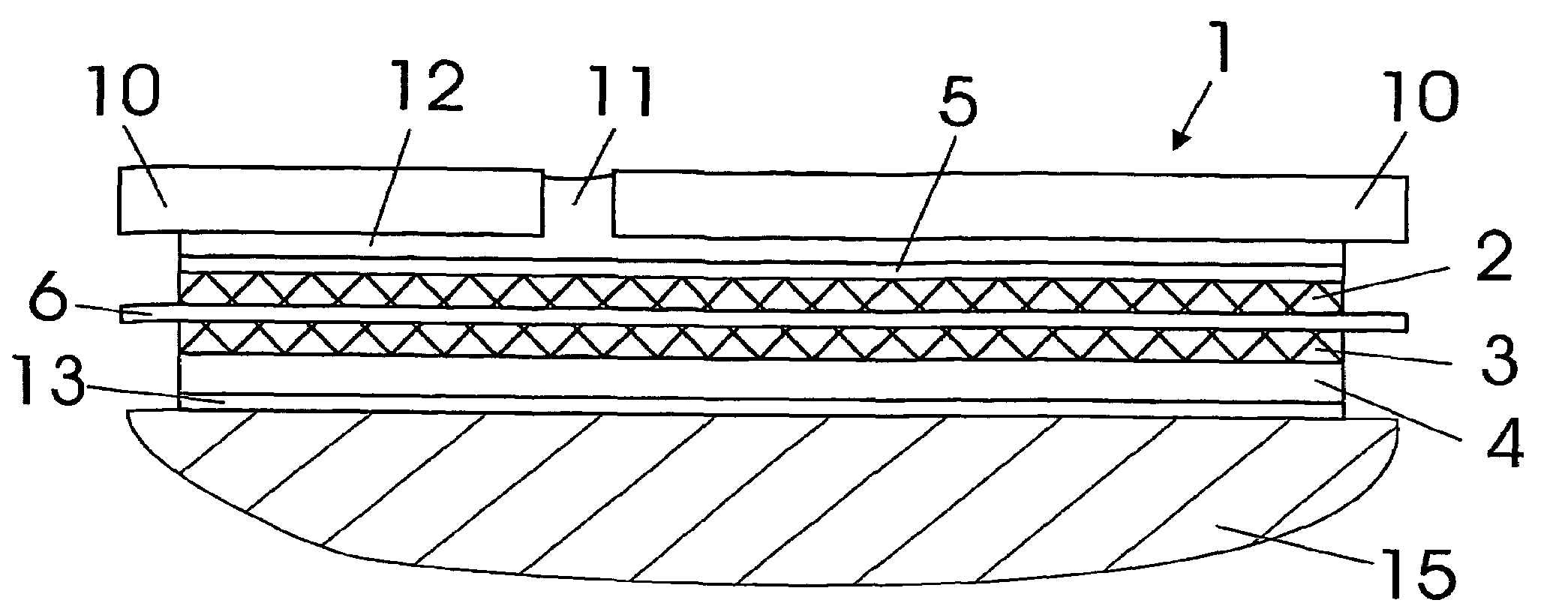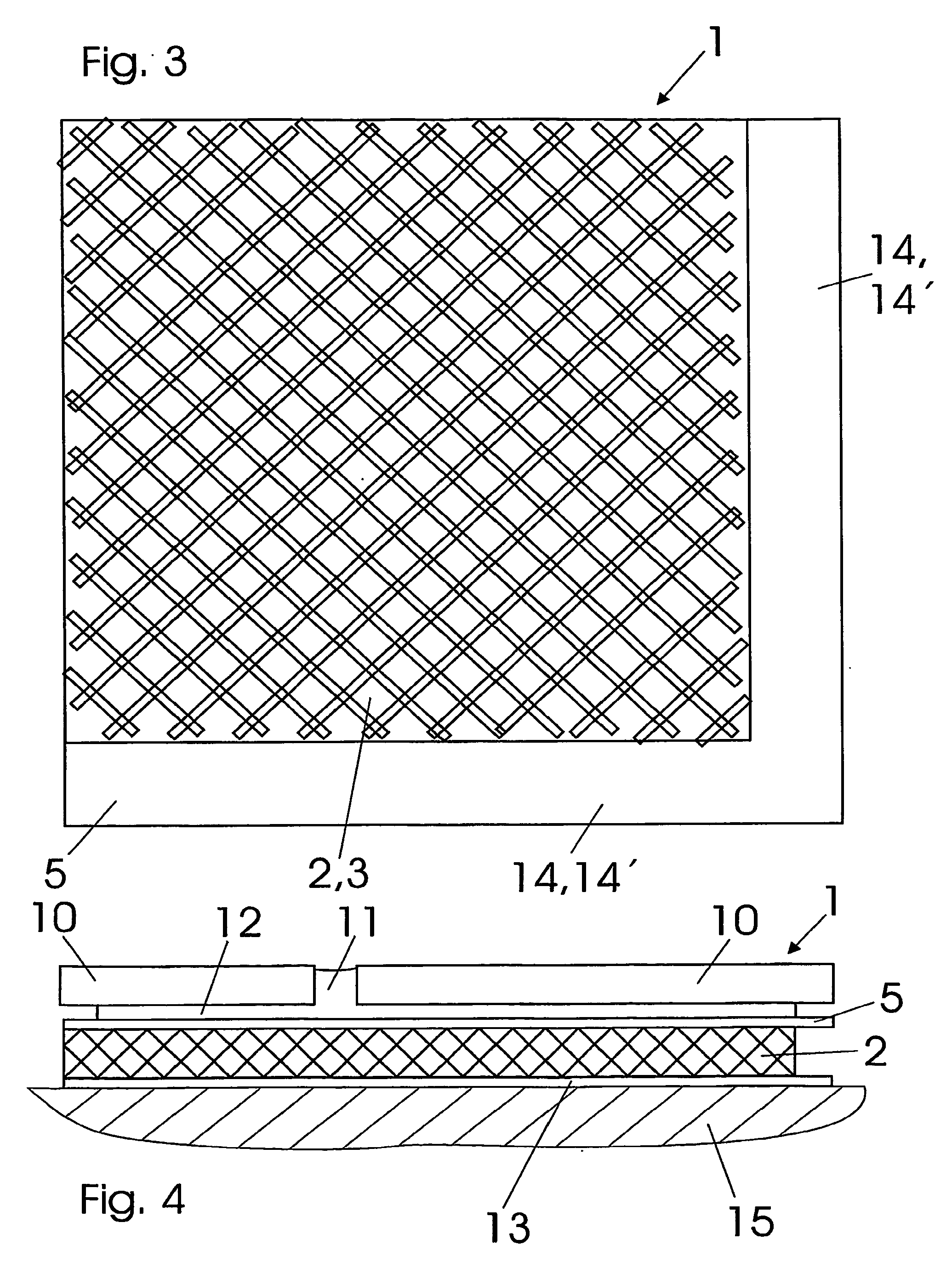Multilayer decoupling system
a decoupling system and multi-layer technology, applied in the direction of synthetic resin layered products, flooring, transportation and packaging, etc., can solve the problems of reducing the reliability of this type of paving, affecting the mechanical load-bearing capacity of the paving layer, and requiring costly repair work, so as to improve the mechanical load-bearing capacity and the effect of anchoring to the tile layer
- Summary
- Abstract
- Description
- Claims
- Application Information
AI Technical Summary
Benefits of technology
Problems solved by technology
Method used
Image
Examples
Embodiment Construction
[0029]FIG. 1 is a cross sectional side view that shows the layered structure of a multilayer decoupling and sealing system 1. FIG. 2 is a cross sectional plan view at the level of a sealing layer 4, and FIG. 3 is a plan view of the decoupling and sealing system 1, in cross section along the reinforcing layer 5. In FIG. 1, the decoupling and sealing system 1 according to one embodiment of the present invention is shown installed on a substratum 15, for instance in a cement screed or the like. Tile paving made up of tiles 10 can be seen above the decoupling and sealing system 1, and this is laid in tile mortar 12 by the thin-bed method. The joints 11 between the individual tiles 10 are similarly filled with tile mortar 12.
[0030]The decoupling and sealing system 1 consists of a sealing layer 4 that is applied to the substratum 15 and can, for example, be of polyethylene and can be laid as a strip of predetermined width. The sealing layer 4 can be cemented to the substratum 15 and it is...
PUM
| Property | Measurement | Unit |
|---|---|---|
| thickness | aaaaa | aaaaa |
| thickness | aaaaa | aaaaa |
| thickness | aaaaa | aaaaa |
Abstract
Description
Claims
Application Information
 Login to View More
Login to View More - R&D
- Intellectual Property
- Life Sciences
- Materials
- Tech Scout
- Unparalleled Data Quality
- Higher Quality Content
- 60% Fewer Hallucinations
Browse by: Latest US Patents, China's latest patents, Technical Efficacy Thesaurus, Application Domain, Technology Topic, Popular Technical Reports.
© 2025 PatSnap. All rights reserved.Legal|Privacy policy|Modern Slavery Act Transparency Statement|Sitemap|About US| Contact US: help@patsnap.com



